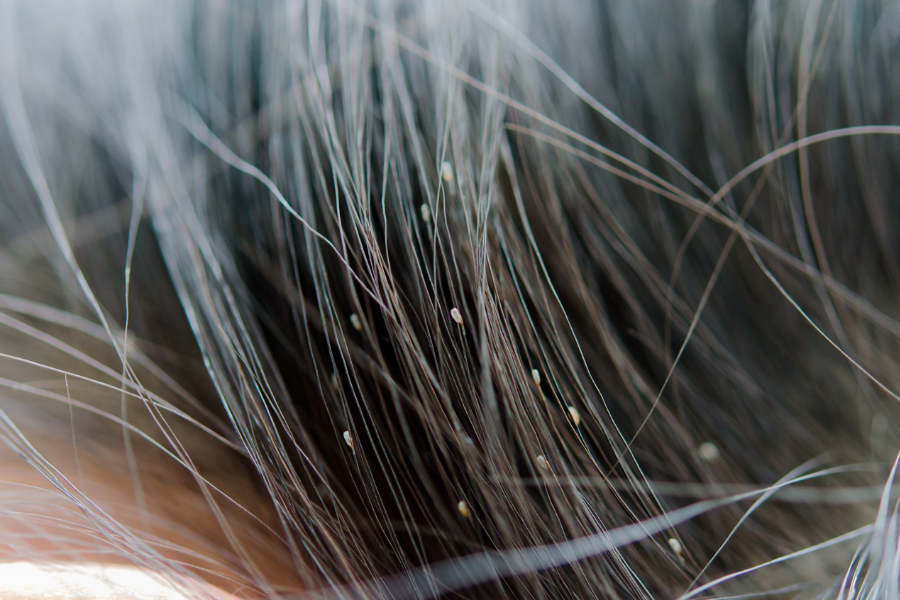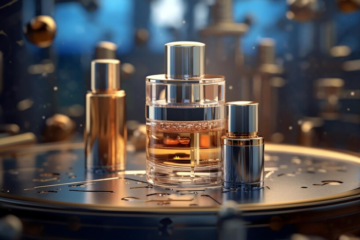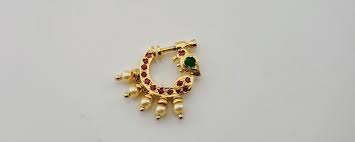On an otherwise ordinary Monday morning, Sarah noticed a faint itch on her scalp. At first, she dismissed it, thinking it might just be a reaction to stress or perhaps a loose strand of hair brushing against her skin. However, as the hours passed, the sensation became harder to ignore. By the time she returned home, the itching had grown so intense that she couldn’t shake the unsettling thought that something might actually be crawling on her head. “Could it be lice, or am I just overthinking this?” she wondered anxiously, as her mind raced through every possible explanation for the sudden discomfort.
Her concern only deepened as she began to research the potential causes, spiraling from one scenario to another. Could it be an allergic reaction to a product she used, or was she genuinely dealing with an infestation? She found herself standing in front of the mirror, scrutinizing her scalp, but without a clear answer, she felt increasingly helpless. What started as a mild itch had now grown into an all-consuming worry, leading her to question whether she should seek medical advice or take matters into her own hands.
What Are lice?
Lice are tiny, wingless parasites that survive by feeding on human blood. These small insects are easily transmitted from person to person, usually through close physical contact. Although lice infestations are not considered dangerous, they can cause significant discomfort and are notoriously difficult to eliminate without proper treatment. There are three types of lice that can affect humans: head lice, body lice, and pubic lice. Head lice are the most commonly encountered variety, especially among children and individuals in communal settings like schools or camps.
The life Cycle Of Lice Can Be Broken Down Into Three Distinct Stages

1. Nit (Egg)
Lice eggs, commonly referred to as nits, are tiny, oval-shaped capsules that are usually yellow or white in color. Measuring just 0.8–0.3 mm, nits are about the size of a grain of sand, making them difficult to spot with the naked eye. Nits are typically laid at the base of the hair shaft, close to the scalp, where the warmth helps them develop. The adhesive substance used by female lice to attach the nits makes them hard to remove. On average, nits hatch within 9 to 10 days, although this can vary depending on environmental factors such as temperature and humidity.
2. Nymph
When the nit hatches, it releases a nymph, which is the immature form of the adult louse. Nymphs are minuscule, about the size of a pinhead, and have a yellowish appearance. In this stage, they closely resemble adult lice but are smaller and not yet fully developed. Like adults, nymphs feed on blood and remain near the hair shaft for protection and nourishment. Within approximately seven days, a nymph will mature into an adult louse, provided it has access to food.
3. Adult (Louse)
Adult lice are larger than their nymph counterparts, roughly the size of a sesame seed. They have six legs equipped with claws designed for clinging to hair strands, and their color can range from grayish to white. An adult louse can live for up to 30 days on a host, feeding regularly on blood. Female lice are generally larger than males and have the ability to lay up to eight eggs per day. This rapid reproduction cycle can lead to infestations growing quickly if not treated promptly.
Understanding the life cycle of lice is crucial in effectively eliminating them. Treatments typically target not only the adult lice but also the nymphs and nits, as any surviving eggs can cause the infestation to recur. Regular inspections, proper hygiene, and the use of specialized lice treatments are essential to prevent and manage the spread of lice.
Distinguishing Between Actual Lice And The Fear Of Lice
Dealing with an itchy scalp can be unsettling, especially when you’re unsure whether it’s due to lice or simply anxiety. Distinguishing between an actual lice infestation and psychosomatic symptoms brought on by worry is key to finding the right solution.
Physical Inspection
Conducting a thorough physical inspection is one of the most reliable ways to determine if you have lice. Start by parting your hair into sections and using a fine-toothed comb to carefully examine the scalp. Look for any visible signs of live lice, which are small and move quickly, or their eggs (nits), which are typically located close to the scalp. If you’re unsure, a magnifying glass can be helpful in spotting these tiny pests.
Psychological Influences
Sometimes, the mere thought of lice can trigger intense anxiety, leading to what’s known as psychosomatic itching. In these cases, the mind convinces the body that something is wrong, resulting in itching and discomfort even when no lice are present. This can cause you to constantly wonder, “Is it lice, or am I imagining things?” High levels of stress and fear can exacerbate these sensations, making it feel very real even when it may just be paranoia.
Preventive Practices

Regular Scalp Checks
To stay ahead of a potential lice problem, regularly check your scalp and hair, especially if you’ve been in environments where lice infestations are common, such as schools or group activities. Use a fine-toothed comb along with a bright light or magnifying glass for a thorough inspection. Early detection makes treatment easier and prevents further spread.
Good Hygiene Habits
While it’s important to note that lice do not thrive based on personal hygiene alone, maintaining good hair care practices can help reduce the likelihood of infestation. Regularly washing your hair and avoiding the sharing of personal items like combs, brushes, and hats are simple but effective ways to lower your risk.
Do I Have Lice or Am I Paranoid?/Treatment Choices

Over-the-Counter Solutions
If you discover lice, there are a variety of over-the-counter treatments available. These typically come in the form of shampoos, creams, or lotions, often containing ingredients like permethrin or pyrethrin, which are designed to kill both lice and their eggs. Be sure to follow the instructions carefully to ensure the treatment is effective.
Natural Alternatives
For those who prefer more natural approaches, there are home remedies such as tea tree oil or vinegar rinses that are sometimes used to combat lice. While these options can be gentler on the scalp, their effectiveness can vary, and it may take longer to fully eliminate the lice compared to conventional treatments.
By understanding both the physical and psychological aspects of lice infestations, you can take more informed steps to determine whether you’re dealing with lice or simply reacting to stress. With regular checks, good hygiene habits, and proper treatment, you can effectively manage or prevent an infestation from escalating.
What Conditions Can Be Mistaken For Lice?
Itching is often the first sign that makes people suspect they have lice, but itching alone is not a definitive indicator of an infestation. There are many other conditions that can cause similar symptoms, leading to confusion. Here’s a look at some of the common issues that are often mistaken for lice:
Dandruff
Dandruff is a common scalp condition that can be easily confused with lice. Dandruff consists of small flakes of dry skin that shed from the scalp, causing itchiness. Unlike lice eggs (nits), dandruff is flaky, loose, and can easily be brushed out of the hair. Nits, on the other hand, are firmly attached to the hair shaft and cannot be removed without using a special nit comb.
Hair and Laundry Products
Residue from hair care products, such as gel, mousse, or shampoo, can mimic the appearance of lice. In some cases, improper rinsing or leaving products on the scalp can lead to buildup, which causes irritation and itching. This can easily be mistaken for a lice infestation. Additionally, contact dermatitis, a skin reaction caused by new or harsh hair products, may also produce itching or a rash, further adding to the confusion.
Skin Conditions
Certain skin conditions, such as eczema or scalp psoriasis, can cause intense itching and redness, symptoms often associated with lice. These conditions can result in dry, flaky skin, which some may mistake for nits. However, unlike lice, these skin issues are not contagious and require a different form of treatment.
How to Diagnose Lice
Properly diagnosing lice involves carefully inspecting the hair and scalp. This can be challenging, particularly in individuals with darker hair. To begin, part the hair in small sections, using a strong light and a magnifying glass to look for any live lice or nits. Head lice typically reside close to the scalp, especially behind the ears and around the nape of the neck. Body lice can often be detected by finding nits on the seams of clothing or directly on the skin, while pubic lice attach to hair strands in the genital area but are slower to move compared to head lice.
When examining the scalp, keep in mind that dandruff, dirt, and product buildup can be easily removed, whereas nits are firmly attached to the hair shaft and cannot be brushed away.
Treatment Options For Lice
Once lice are identified, there are various treatment options to eliminate them. Over-the-counter medicated shampoos are often the first line of defense. These shampoos usually contain permethrin or pyrethrin, ingredients specifically designed to kill lice and their eggs. These products are applied to the scalp and hair, left on for a specified period, and then rinsed out.
For more severe cases, prescription-strength treatments are available, such as lotions or shampoos that contain stronger chemicals like malathion or benzyl alcohol. These medications are typically recommended if the lice are resistant to over-the-counter treatments.
After the first round of treatment, it’s crucial to perform regular checks every 2–3 days for the next few weeks to ensure that both lice and nits are fully eradicated. Some treatments recommend a second application after nine days to kill any remaining lice that may have hatched. Always follow the instructions carefully, and treat all household members and close contacts to prevent re-infestation. Additionally, make sure to wash or seal off any personal items, such as clothing, bedding, or hats, that may have come into contact with the lice. Non-washable items should be sealed in a plastic bag for at least two weeks.
What If Treatment Fails?

In some cases, treatment may not work as expected, leading to continued discomfort and itching. Several factors could contribute to treatment failure. For example, the initial diagnosis may have been incorrect, meaning there was no active lice infestation to begin with. It’s also possible that the medication was not applied correctly, or the lice may be resistant to the treatment used. Additionally, re-infestation can occur if steps were not taken to thoroughly clean or isolate personal items.
If over-the-counter treatments fail, it’s advisable to consult with a board-certified dermatologist, who can review the treatment process and suggest alternative solutions. Dermatologists are experts in treating persistent lice infestations and can offer prescription treatments or other specialized care.
Frequently Asked Questions About Do I Have Lice or Am I Paranoid
1. How can I tell if I have lice or just dandruff?
Lice eggs (nits) are firmly attached to the hair shaft, while dandruff is flaky and can be easily brushed out of the hair. If you can’t remove the particles from your hair with a comb or by shaking it out, you may have lice.
2. Do lice only infest people with poor hygiene?
No, lice do not discriminate based on hygiene. They can affect anyone, regardless of how clean they are. Lice are spread through close contact or sharing personal items like combs, hats, and bedding.
3. What should I do if I’m not sure whether I have lice?
If you’re unsure, perform a thorough scalp examination with a fine-toothed comb under strong light. If you’re still uncertain, consult a healthcare provider for a definitive diagnosis.
4. Can stress cause lice-like symptoms?
Yes, stress and anxiety can lead to psychosomatic symptoms like itching, making you feel as if you have lice when you don’t. It’s always good to perform a physical examination to rule out lice before assuming it’s due to stress.
5. How long do lice live on human hosts?
Adult lice can live for about 30 days on a human scalp. Female lice are larger than males and can lay up to eight eggs daily, perpetuating the infestation if not treated.
Conclusion
Lice can be a frustrating and uncomfortable issue, but they are manageable with proper treatment and prevention. It’s important to accurately diagnose the problem by distinguishing lice from other causes of itching, such as dandruff or skin conditions. Once diagnosed, prompt treatment with medicated shampoos or prescription treatments can eliminate the lice and prevent re-infestation. Regular checks, good hygiene practices, and thorough cleaning of personal items are essential to keep lice at bay. If you’re ever unsure or over-the-counter treatments aren’t effective, consult a dermatologist for expert advice. With the right approach, lice can be effectively managed and eradicated.
Stay in touch with us for more updates and alerts! Webofbuzz




